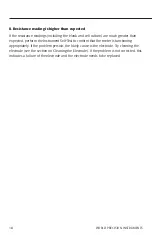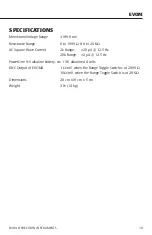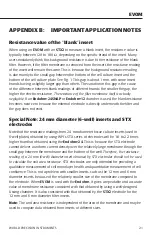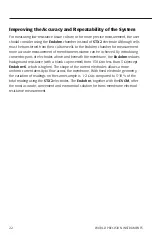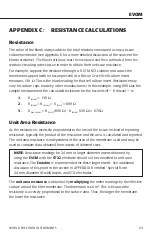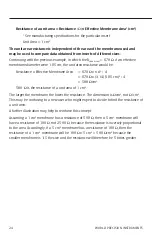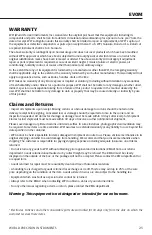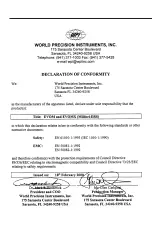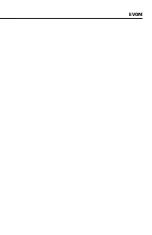
EVOM
APPENDIX C: RESISTANCE CALCULATIONS
Resistance
The value of the blank always adds to the total resistance measured across a tissue
culture membrane (see Appendix B for a more detailed discussion of the source of the
blank resistance).
The blank resistance must be measured and then subtracted from the
resistance
reading across tissue in order to obtain the true tissue resistance
.
For example, suppose the resistance through a 0.15 M KCl solution and across the
membrane support (with no tissue present) of a Falcon 12-well cell culture insert
measures 130
Ω
. This is the blank reading for that cell culture insert. (Resistance may
vary for culture cups made by other manufacturers.) In this example, using 800
Ω
as the
sample measurement, the calculated resistance for the tissue itself — R (tissue) — is:
1.
R
(blank)
= 130
Ω
2.
R
(blank)
+ R
(tissue)
= R
(Total)
= 800
Ω
.
3.
R
(true tissue)
= R
(Total)
(800
Ω
) - R
(blank)
(130
Ω
) = 670
Ω
Unit Area Resistance
As the resistance is inversely proportional to the area of the tissue, instead of reporting
resistance, typically the product of the resistance and the area is calculated and reported.
The unit area resistance is independent of the area of the membrane used and may be
used to compare data obtained from inserts of different sizes.
NOTE:
Resistance readings for 24 mm or larger diameter inserts obtained by
using the
EVOM
with the
STX2
electrode should
not
be converted to unit area
resistance. The
Endohm
is recommended for these larger inserts. See additional
discussion of this point in the section in APPENDIX B entitled “Special Note:
24 mm diameter (6-well) inserts and STX electrodes”.
The
unit area resistance
is obtained by
multiplying
the meter readings by the effective
surface area of the filter membrane. The dimension is
Ω
cm
2
. This is because the
resistance is
inversely
proportional to the surface area. Thus, the larger the membrane,
the lower the resistance.
WORLD PRECISION INSTRUMENTS 23










